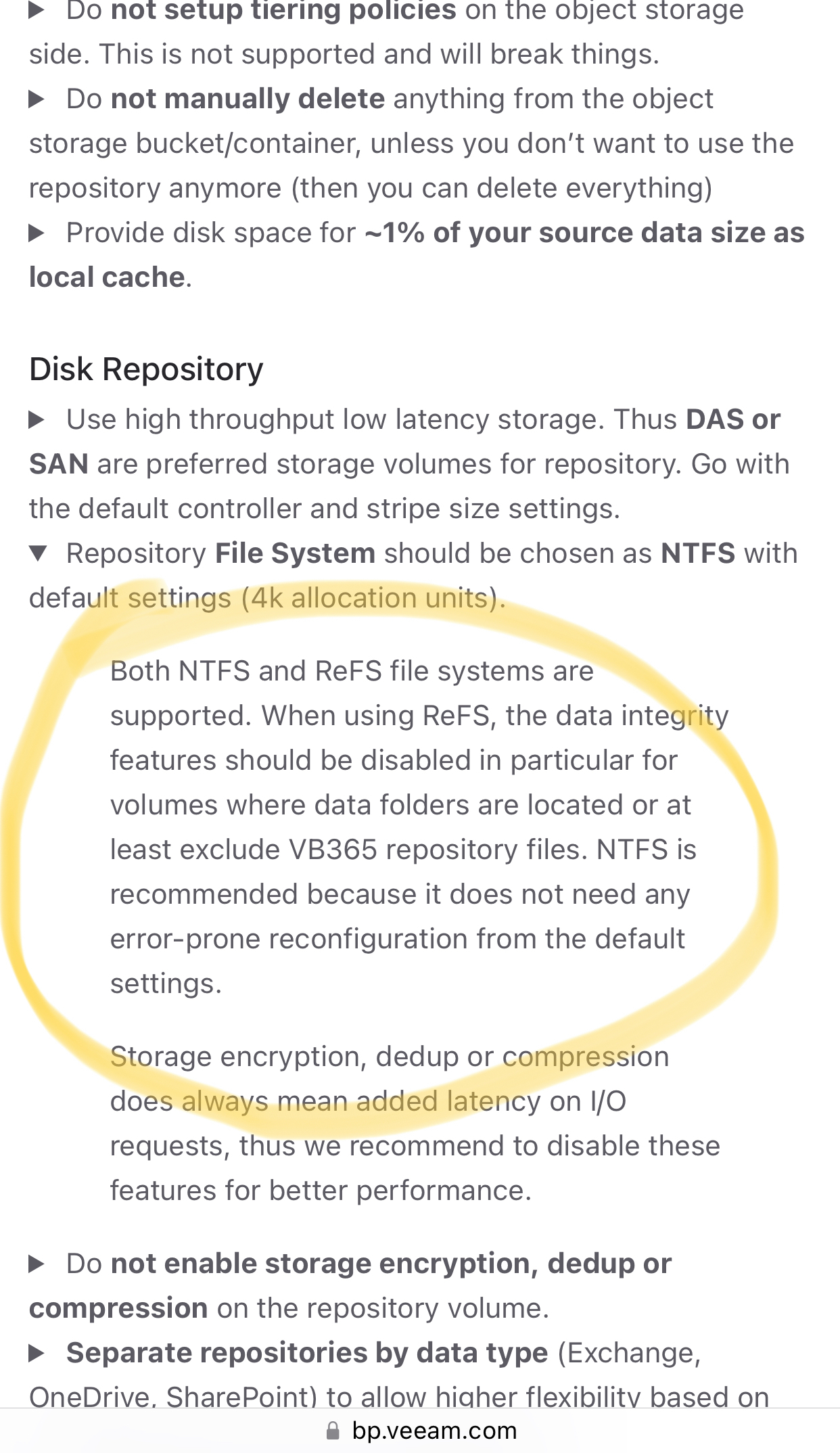Hi all,
we are running a Veeam Backup for Microsoft 365 environment. We are using NTFS volumes formatted with 4KB cluster size, according to Veeam best practices (s. https://bp.veeam.com/vbo/guide/buildconfig/proxy-repo.html). Every job has it’s own repository and multiple repositories reside on the same NTFS lun.
Now we are running into the problem, that some luns reach 16TB size. Due to the cluster size of 4KB we are not able to expand further.
We now need to migrate some of the repositories and I have two questions about that:
- Should we migrate to luns with a bigger cluster size? What are the side effects of that?
- What’s your preferred way to migrate? The best way I know is to copy the repo contents with robocopy, create a new repo pointing to the new location and then change backup job target to the new repo. Unfortunately that implicates stopping Veeam services while copying, because otherwise all of the jet dbs are locked…
Is there a better way? Or will be in v6?
Thank you for your input!
Best regards
Christoph






